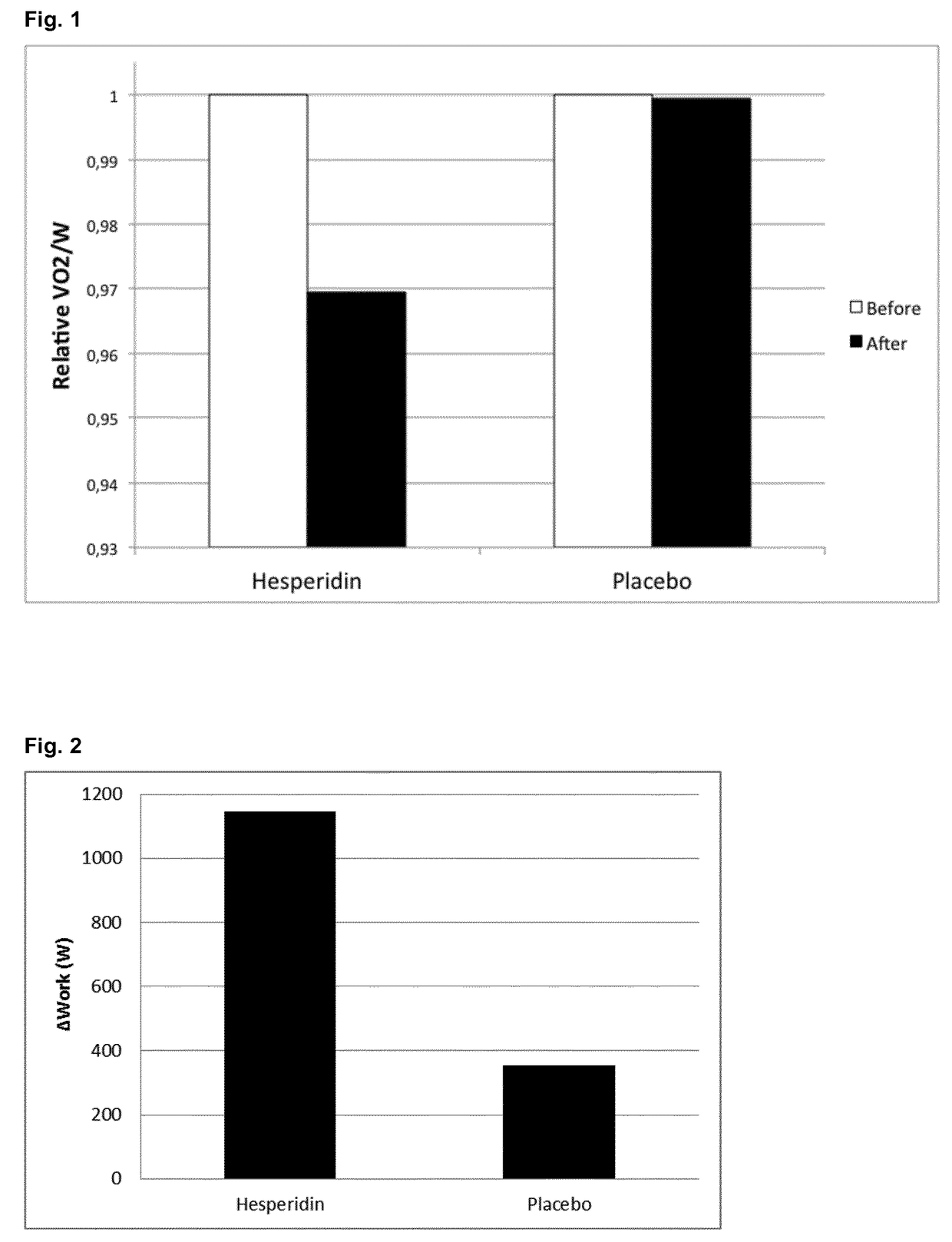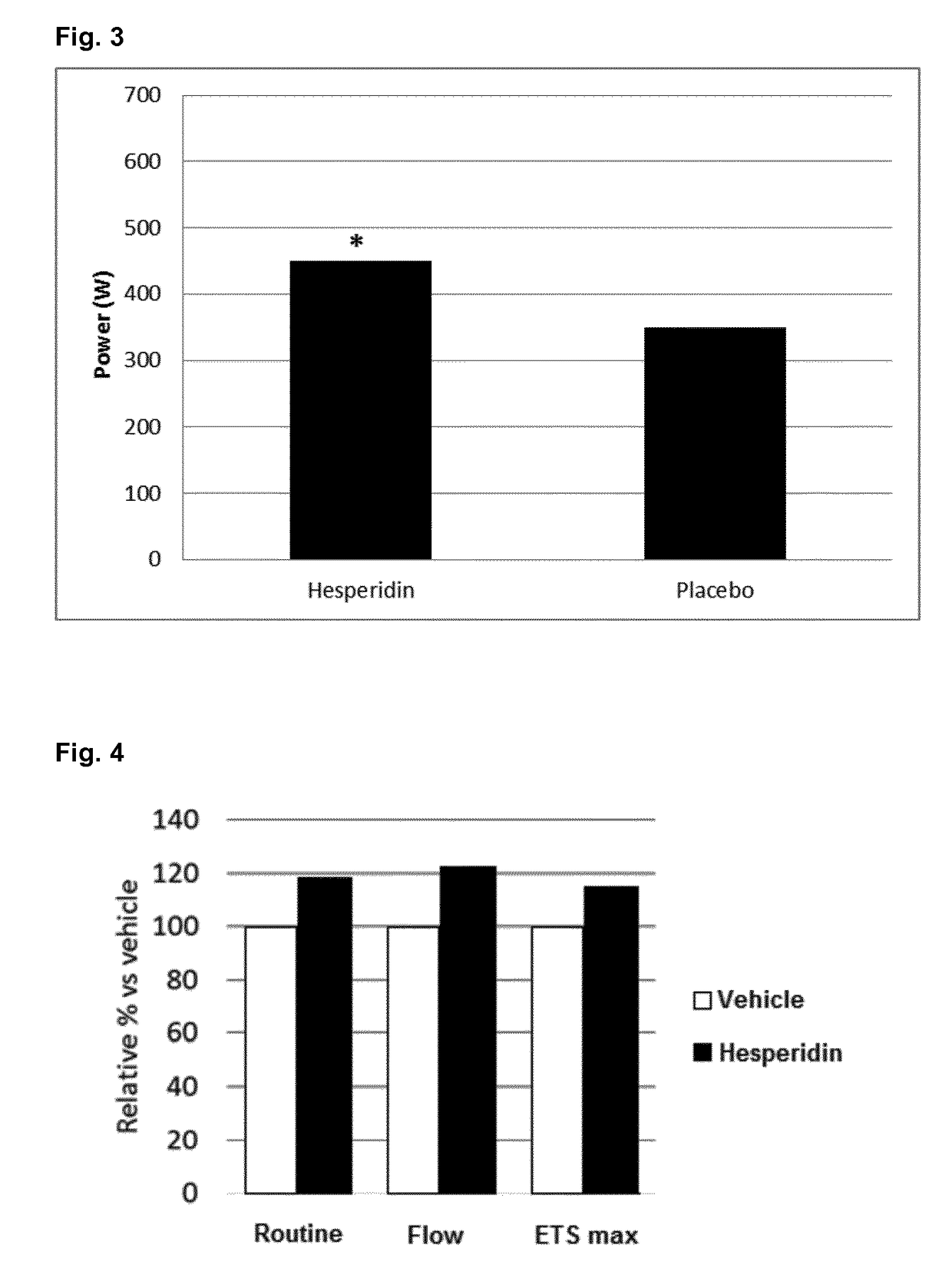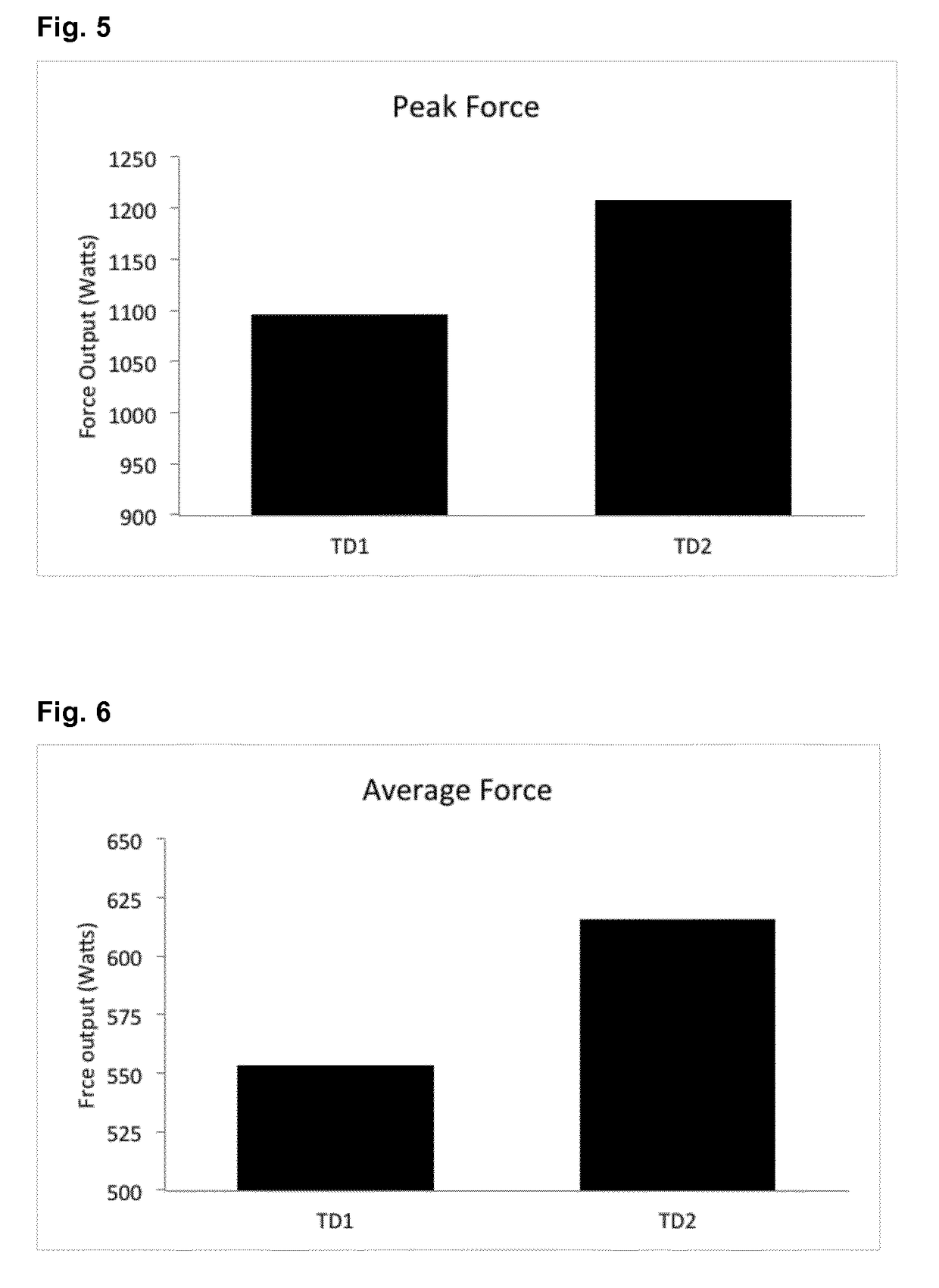Compounds and compositions for improving power output and oxygen efficiency
- Summary
- Abstract
- Description
- Claims
- Application Information
AI Technical Summary
Benefits of technology
Problems solved by technology
Method used
Image
Examples
example 1
Study Design
[0069]In this randomized, double-blind, placebo-controlled study with parallel design, 40 participants randomly received a four weeks supplementation with either a daily dose of 500 mg hesperidin, or an identical looking and tasting placebo. The hesperidin extract was tested on its effect on exercise performance and recovery after pre-exhaustive exercise.
[0070]The study consisted of a pre-test, baseline test (Test 1) and a final test after a 4 week intervention period (Test 2). Prior to each test, participants were instructed to refrain from intense exercise and alcohol for at least 24 hours.
[0071]First a Pre-test was performed, which consisted of a ten minute time trial after a five minute warm-up at 100 W on a bike. Parameters obtained from this test were mean power, mean heart rate, mean VO2-consumption and an estimation of VO2-max. At t=0, 9, 10, 11 after starting the test, participants were asked to indicate their perceived exhaustion using a 10-point scale (0=lowes...
example 2
[0081]The anaerobic capacity refers to the total amount of energy that can be obtained from anaerobic energy systems (e.g. anaerobic glycolysis). It is an important mediator of performance, especially for interval athletes. For example, 100 m sprinters are considered to fully rely on the anaerobic capacity.
[0082]An athlete was defined as an interval athlete when the sport required bursts of short-term high intensity exercise, i.e. football or 100 m sprint athletes. Anaerobic capacity was determined by measuring the total amount of work (W) generated by the test subjects over 30 seconds. Test results showed a higher anaerobic capacity for the group of interval athletes that received the hesperidin supplements compared to the control group. The anaerobic capacity difference after 4 weeks of treatment (Δ anaerobic capacity) was 3.2-fold higher in the treatment group compared to the control group (1146.8 W versus 354.6 W). Thus, as is also evident from FIG. 2, the use of a compound of t...
example 3
[0083]Peak force capacity refers to the highest mechanical power generated in the first 3 seconds of exercise. It reflects the energy-generating capacity of high-energy phosphates and it is an important mediator of performance for resistance athletes in particular. Study design was an open-label pre-posttest study. Test product and administration were as described in example 1. The subjects of the study were resistance athletes. Peak force output was measured in a barbell squat resistance training exercise using a linear encoder. Peak force output was measured as highest amount of Force (W) generated over a single repetition of the exercise (which lasted no more than 3 seconds). Test results showed a significantly higher peak force output after 4 weeks of hesperidin supplementation for all subjects compared to baseline. Thus, as is also evident from FIG. 3 the use of a compound of the invention increases the peak force output.
PUM
| Property | Measurement | Unit |
|---|---|---|
| Mass | aaaaa | aaaaa |
| Mass | aaaaa | aaaaa |
| Fraction | aaaaa | aaaaa |
Abstract
Description
Claims
Application Information
 Login to View More
Login to View More - R&D
- Intellectual Property
- Life Sciences
- Materials
- Tech Scout
- Unparalleled Data Quality
- Higher Quality Content
- 60% Fewer Hallucinations
Browse by: Latest US Patents, China's latest patents, Technical Efficacy Thesaurus, Application Domain, Technology Topic, Popular Technical Reports.
© 2025 PatSnap. All rights reserved.Legal|Privacy policy|Modern Slavery Act Transparency Statement|Sitemap|About US| Contact US: help@patsnap.com



